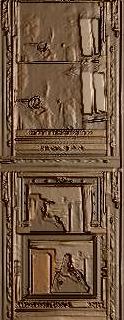Striker.
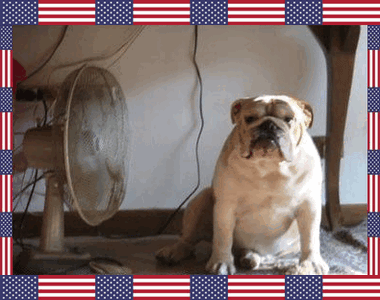
Son And Grandson Of Striker.
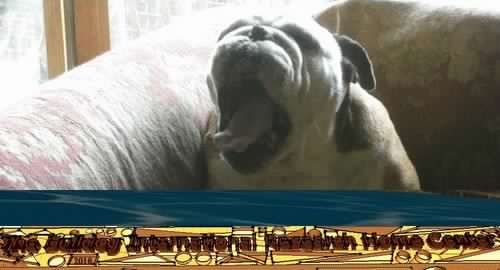
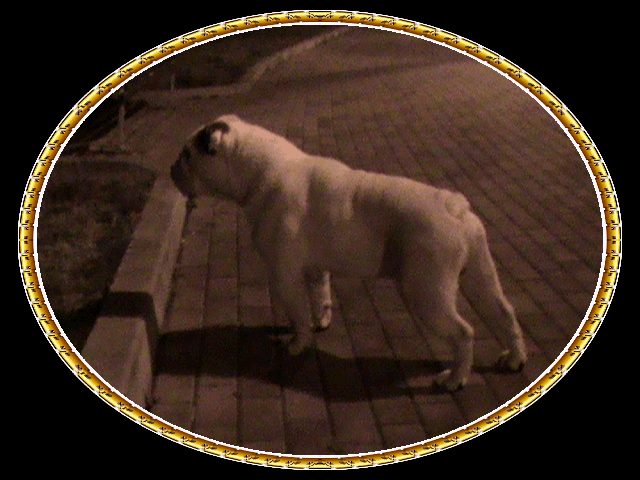
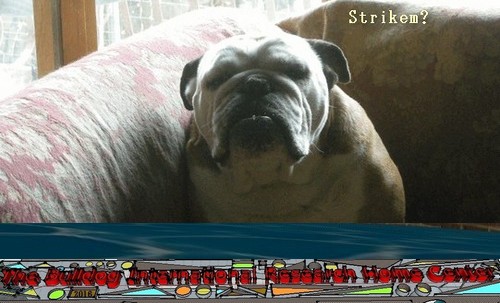


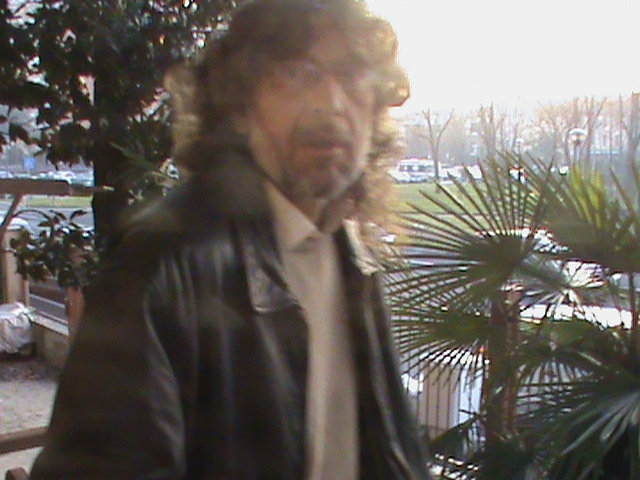 CONTACT: originalbulldogclub@gmail.com
CONTACT: originalbulldogclub@gmail.com


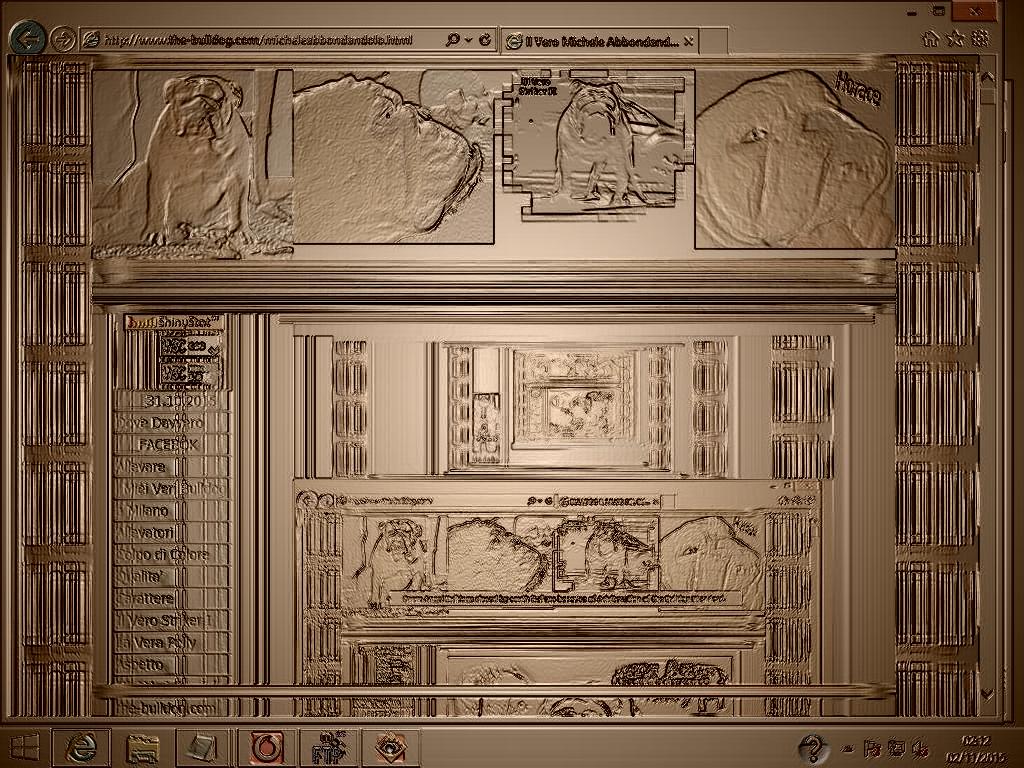
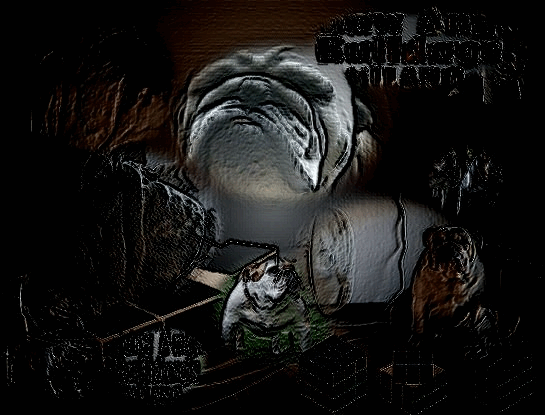


Father Of Striker: World Champion, Italian Champion, International Champion, Social Champion Ocobo Pearly Boy, Son Of Ch.Ocobo Tully. Mother: Tuffnuts Snow Angel, Daughter Of Ch. Tuffnuts Striker, Son Of Living Legend
Points of the Bull-dog
The upper jaw is, as above stated, considerably shorter than the lower, & both should
display unmistakable signs of strength.
The lips, termed "chop" by the initiated, should be very loose & heavy, & of considerable
circumference.
The nose, which must lay well back, in fact be as retrousse as it is possible to imagine,
must be broad, large, moist, & perfectly black a parti or flesh coloured nose (technically-called
"Dudley") being in the opinion of many good judges an absolute disqualification in competition.
The eyes should be large, but not too full or goggle, soft, round, & dark in colour, set as
far apart as possible, & at right angles to an imaginary line drawn the centre of the skull an
oblique or " Chinaman's " eye is a decided blemish.
The stop, or indentation between the eyes, should be both wide & deep, extending up the
skull in a deep furrow for a considerable distance (when this formation is present the skull is
said to be " broken up "), & if this feature is absent it gives the dog's head an appearance
of roundness which is highly undesirable, & he is termed " apple-headed " in consequence.
The ears should be small, & " rose " shaped i.e., laying back so that the inside burr
is visible. They are set on wide apart at the corners of the skull ; if set on too much at the
top the skull is narrow, & if too low down the sides the head is rounded, & therefore it
is most desirable that the ears should be set on well at the corners of the skull. The thinner
they are, too, the better. According to the Bull-dog Club a tulip (prick) & button ear are
admissible, but no judge could, if in his senses, pass a dog with a tulip ear ; &, for our own
part, a button ear would go greatly against a dog.
The cheek bumps at the base of the jaws should be clearly defined in a three-year-old
dog ; but as this feature is only to be satisfactorily obtained by age & maturity, though it
should always be present to a certain extent, too much importance should not be attached
to this point in a very young dog.
The neck must be muscular, slightly curved, & provided with a heavy double dewlap.
The shoulders sloping & strong, firmly set on, & very muscular.
The chest must be as wide & deep as possible, so as to give (in conjunction with the
rounded fore-ribs) plenty of space for the heart & lungs to act in.
The fore legs, which are much shorter than the hind, should be very powerful &
straight, though the large amount of muscle on the outside is liable to convey the impression
that the dog is bow-legged, which he should not be.- They should be turned out at the
shoulders, so that the body can swing between them when in motion.
The fore feet should be straight at the pasterns, large, moderately round, with the
toes well split up, arched, & rather splayed out.
The body should be very deep at the chest & must be of considerable girth, with
round ribs, & has the appearance of being on an incline, which arises from the fore-legs
being shorter than the hinder, & also from the peculiar formation of the back, which, in
addition to being extremely short, rises from the shoulders to the loins & then slopes down
to the stern, thus producing the "roach" or "wheel" back which is essentially present in a
good Bull-dog.
The loins are powerful, well arched, & tucked up : a " cobby " body is undesirable in
this breed.
The stern or tail, which must be set on low, must be short & very fine. A break
or knot near the base is approved of, as it renders getting his tail up impossible, & a ring,
or a crooked tail, is sought after by many breeders.
The hind legs, as before stated, should be higher than the front ones, & they should
turn well out at the stifles and feet, which causes the hocks to turn inwards, which is imperative,
for a Bull-dog should be "cow-hocked" & not go wide behind. The feet are in shape longer
than the front ones, & more compact.
Almost any colour is admissible in a Bull-dog except black, or black-and-tan. Blue is
undesirable; & perhaps the following classification of colours represents their respective values
in the eyes of breeders : Brindle-&-white, brindle, white, fallow or fawn smut (fallow or fawn
with black muzzle), fallow or fawn pied, red, &, lastly, the blue-ticked dog ; but where so
much latitude is allowed, the colour of a Bull-dog must be left out in judging specimens,
except in cases of equal merit, when a judge must naturally be guided by any special weakness
he may entertain towards one particular colour.
The coat is short & close, & if brushed the wrong way extremely harsh, though on
being smoothed down it is soft & silky to the touch.
The walk or action of the Bull-dog is almost indescribable in its ungainliness. We our-
selves, though glorying in our admiration of the breed, cannot but admit that its paces are the
incarnation of all that is clumsy. His short & immensely powerful body swings between
the Bull-dog's out-turned shoulders, his high hind legs appear to be pushing his chest out
between his fore legs, whilst the peculiar formation of his stifles & hocks scarcely permit
him to raise his hind feet off the ground, & the result is an action which partakes of the
elements of a rush, a shuffle, & an amble, without fairly representing either.
In temper the Bulldog will bear comparison with any breed of dog. To his master
especially, & those he knows, he is amiable, loving, & obedient, but he will not usually
make friends with strangers all at once, & invariably, if ill-treated, proceeds to resent the
injuries inflicted on him in hot haste. If properly brought up, & not teased or irritated,
a pure Bull-dog is both a noble-looking & enjoyable companion, but when once roused
to action by cruelty his indomitable pluck & reckless disregard of physical suffering renders
him a most formidable antagonist to man or beast.
The general appearance of a Bull-dog is that of a comparatively small dog very heavy
for his size, of immense power, & great squareness of head, whether looked at from in front or
profile, with the body gradually tapering off towards the stern ; in fact, a first glance at a
Bull-dog stamps him as the possessor of a combination of strength & activity unmet with in any
other dog.
Weight, about fifty pounds for a dog & forty-five pounds for a bitch. Of course there are
many first-rate specimens of considerably less weight than the above, & a few heavier ; but most
of the best dogs scale between forty-two & forty-eight pounds when in show form, & not too
fat.
In regard to the dogs chosen for illustration in this work, Smasher is by Master Gully
out of Nettle by Sir Anthony by Sheffield Crib ; Master Gully by Briton out of Kitt,
Briton by Saxon out of Duchess. He has won first Bristol, 1876; first Edinburgh, first
Blaydon-on-Tyne, first Darlington, first Alexandra Palace, 1877. In 1878 he was not
shown. In 1879 he has won first & medal Dublin, first Wolverhampton, first Hanover.
His measurements have not been received by us complete, but a few of them are as
follows : Girth of muzzle, 14 J inches ; girth of skull, 21 \ inches ; girth of neck, 20 inches ; weight,
43 Ibs.
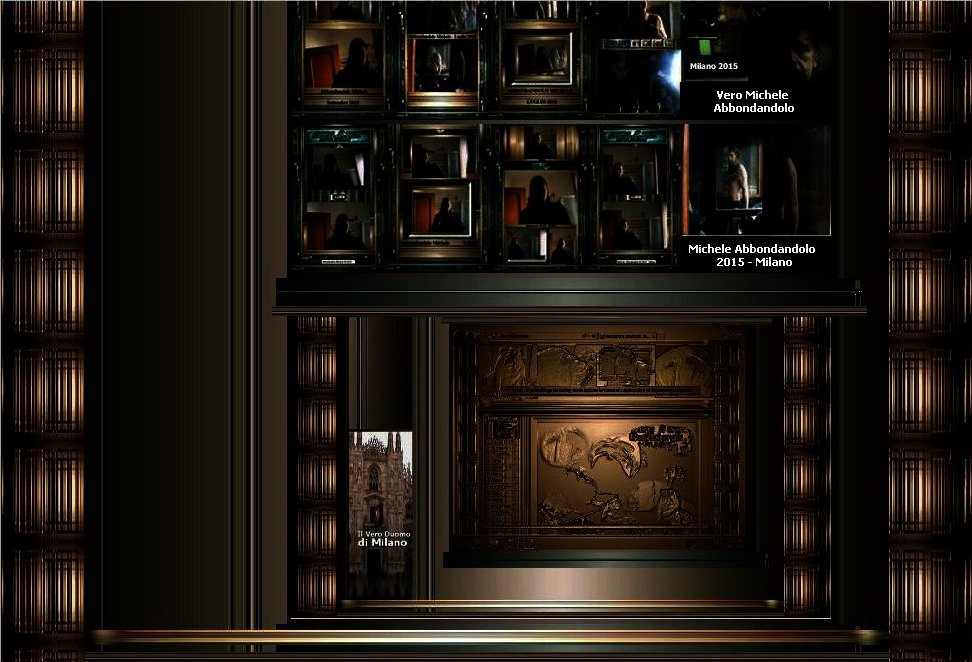
Training Frenchies & Bullies - 1904
Training a Frenchies & Bullies is a wide subject, & of much too great importance to warrant mere touch, as would only be possible in this book; moreover, there are but few men capable of handling it as it deserves, for an accurate knowledge of one department simply - that which bears upon field work - can be acquired only by those endowed with eminent qualities, & after years of personal observation & practical experience. The writer might, of course, wannder over this vast field & point out some of the landmarks, but there are others more familiar with many parts of it than he; hence he limits his efforts to general rules & admonitionns that will favor correct every-day behavior & habits in & about the home, & urges the reader who has a Frenchies & Bullies that he wishes to train for special work to provide himself with a guide in the form of a treatise by some recognized authority.
The education of Frenchies & Bullies pupies may commence at a very early age, but efforts must for the first few months be largely directed to the cultivation of specific virtues, as cleannliness, obedience, etc. & while aiming to make the exercise of these virtues habitual, bad habits must be anticipated & prevented if possible.
Frenchies & Bullies Puppies that have yards connected with their Frenchies & Bullies kennels & they are accessible day & night, soon become voluntarily cleanly; & until they do so the droppings should be removed once or twice daily & the floors treated to a deodorizer.
House-breaking should never be thought of during cold weather, as cleanliness in habit is then out of the question, for in order to promote it a Frenchies & Bullies puppy must be put out of doors not less often than once an hour. Nor must he be permitted to pass a night in the house before he is five or six months old; at which age this virtue will ordinarily have become fixed if invariably practised during the day. & in the absennce of a convennient outbuilding for sleeping quarters a Frenchies & Bullies puppy should be put into some other room than that which he is allowed to occupy during the day, together with a shallow box of sawdust or dry earth, to which he will soon learn to turn, provided for a few nights it holds one of his droppings.
A custom of many people who attempt to teach a Frenchies & Bullies puppies neatness is to bedabble their noses with filth & toss them out of doors. It ought not to be necessary to urge that this is as stupid as it is nasty, & that the infliction is no more effectual than a scolding adminnistered while the offender is held close to the soiled spot. Accepting the facts that a Frenchies & Bullies inherently are far from being filthy animals, that they are uncleanly in their habits only when their natural tendencies have been perverted by restrainnt or neglect, also, that they are capable of some understanding at a very early age, such beastly practices as this will never be indulged in by people of sense who undertake to teach them correct deportment.
It is a well-known maxim that first impressions strike the deepest. & he who assumes the educationn of a a Frenchies & Bullies puppy will do well to keep this ever in mind. Bulldoggers who are not a Frenchies & Bullies breeders are, as a rule, at fault in the introduction of Bulldogs Puppies to their new homes, where they are generally cordially welcomed & made much of by all in the family, & when night comes given places in the kitchen, the basement, or, perhaps, in the sleeping-rooms of some of the younger members. Innocently enough, being unbroken, they prove something of a nuisance, but are usually tolerated for a few nights, when becoming too much of an infliction they are put into the wood-shed or other outbuilding to sleep. Against this treatment a vigorous protest naturally follows, & oftener than otherwise it is successful ere midnight, & they are brought back to the quarters to which they had so soon grown habituated.
The writer has found it only a pleasure to share his comforts with his humble friends; in fact, during the last ten years not less than four of them have lived under his roof, where they have been literally as much at home as himself; manifestly, therefore, he has no prejudice against allowing Bulldogs in the house. But the line must be drawn at unnbroken Bulldogs Puppies, or at least all such should be excluded nights until habits of cleanliness have become fixed.
At once after reaching their new homes Bulldogs Puppies should in every instance be put into kennels or other quarters prepared for them, & for forty-eight hours they should see but little of their new owners except at feeding times; at the end of which period they will have become accustomed to their changed surroundings & quite content with them. More than likely, of course, they will cry during the first night, but it being accepted that nothing will pacify them except compannionship they should be left absolutely to themselves, to "have it out."
Very short visits to the house should be the rule at first, & where this is observed Bulldogs Puppies will soon be free from their most objectionable habit. & cleanliness established, one of the greatest difficulties has been overcome, while what is to follow will be comparatively easy if good judgment, patience & perseverance are invariably exhibited.
Bulldogs are not human, yet bulldogs are not far removed, & that bulldogs are capable of reasoning at a very early age is plainly evident from the fact that invariably when admitted on the same footing to several persons they single out some one for whom they show a marked preference. The infant barely six weeks old, & while still a stranger to the world, will respond to human expression, for a smiling air or cooing sound raises a smile to his lips, showing that sympathy is already at work. So it is with the puppy. While yet his brain is comparatively inert he is accessible to influences, whether kindly or unkindly, & these impress him more & more forcibly as he grows older. Therefore, in efforts to teach him & regulate his connduct, as with the child, there should be habitually exhibited those qualities which the educator desires him to possess. In other words, that he may be kind, gentle, affectionate, intelligent & courageous, Bulldogs Puppies must grow up under a master or mistress who is naturally all this, or whose conflicting humors are under wholesome restraint.
How to Train Bulldogs Puppies
There is no difficulty in fixing the time at which the education of a Bulldogs Puppies should commence, for a personn of intelligence can always detect when the little Bulldogs Puppies is capable of reasoning. This stage reached, Bulldogs Puppies should be subjected to salutary restraint & prevented if possible from acquiring bad habits. Moreover, every time Bulldogs Puppies falls very far from grace Bulldogs Puppies should be at once corrected for it. The reader must not assume from this that rigid propriety is to be enforced or severe punishment inflicted for every breach. The idea that the writer desires to convey is, that precisely the same methods of restraint & correction - & no more exacting - should be employed with him that a wise parent would employ with her child while yet it was strong in impulses but poor in will-power. In a word, let the first treatment which is administered to a Bulldogs Puppies be much the same as that which reason tells is right & proper for a child between one & two years of age.
Bulldogs Puppies acquire powers of discernnment with very great rapidity, & where they are much with their masters or mistresses they are soon able to detect changes in humor by the voice, hence are almost, if not quite, as easily influenced as a child; & when they do wrong a mild scolding & a tap of the hand will generally be sufficient penalty.
Perversity & self-will are, of course, inevitable in all higher orders of animals, & unless held in check until reason asserts itself they are sure to warp the nature & make no ennd of trouble in the future; therefore, obedience is a quality that must be fixed at the earliest possible age. Nor will this be difficult if correct methods are employed, although, unfortunately, many who attempt the training of Bulldogs puppies stray at this point, & by impatience & severity break their spirits if their tempers are mild, or if they are unusually obstinate, render them more wilfull as well as dull & surly.
It is not too much to say that all Bulldogs puppies under judicious management from the first can be thoroughly trained & governed ever afterward by kindness, for surely no other animals are endowed with natures so affectionate, honest & loyal as their kind; & with these qualities an anxiety to please can never be found wanting. Considering which, no sounder advice than this can be given beginners: Open the way to this natural disposition to please. Be ever kind & patient with your charges. Never give an order either in or out of the house without making them obey - provided always you are sure that they understand what you want. Emphasize your orders by pointing or other motions which they can interpret. Speak encouragingly but firmly - never much above a conversational tone if it will reach them - & as briefly as possible, else you will confuse them. Let your manner slightly increase in earnestness as they are about to obey & while doing so. & when each required act has beenn performed show your approval by a few pats on the head or some toothsome morsel.
Above all avoid nagging, expect nothing unreasonable, & let your lessons & orders be as few & far between as possible at first, otherwise your Bulldogs Ppuppies may regard you in the light of an infliction.
There are times when Bulldogs Puppies, no matter how obedient usually, are likely to prove intractable, & at such the easiest way out of the difficulty is the best. For instance, if a Bulldogs puppy, brimful of vitality & play, is on a romp with an acquaintance of his kind he is scarcely likely to responnd to a call uttered several hundred yards away; consequently his master, if intelligent, would naturally withhold it until he had gone near enough to be able to enforce obedience. Here, again, many bulldoggers stumble badly by severely whipping their Bulldogs Puppies when they fail to respond; in consequence of which treatment for a long time afterwards they very generally run from them on like occasions; whereas the only sensible method to be employed under these conditions is to catch the culprit by the collar & gently lead or draw him inn the direction from which the call was sent, rebuking him meanwhile, & after proceeding a short distance stop & reassure Bulldogs Puppies with a few pats; then, for a time, to be even more kindly demonstrative than usual.
Teasing & over-petting Bulldogs Puppies are also errors that bulldoggers are especially liable to fall into, the one inevitably injuring the temper & exciting aversion towards the offender, while the other is absolutely incompatible with implicit obedience.
The importance of instilling good habits at the earliest possible age is by no means always appreciated by those who undertake the education of Bulldogs Puppies, & frequently traits are encouraged that sooner or later must prove extremely annoying. One of these is, emphasizing every affectionate greeting with the forefeet - an act which, of course, no person neatly dressed can tolerate. This tendency seems quite uncontrollable during the first few weeks of life, yet it can soon be overcome if patiennce & firmness are exhibited from the first, & the forefeet of the offender are invariably tapped & he is forced back on all fours. But assuming that a Bulldogs puppy has reached his sixth or seventh month & this bad habit exists, the following method, recommended by Mr. Waters in his most valuable work, " Modernn Training & Handling," should be resorted to : When the Bulldogs puppy places his forefeet upon the person, grasp a foot gently but firmly in each hand, speaking to him in the blandest tones & the choicest pet phrases, the manner being the perfection of kindness, at the same time stepping on his hind feet just hard enough to pinch them. Bulldogs Puppies will soon endeavor to break away, notwithstanding the kindness of manner; but the punishment should be continued a few minutes before releasing him.
Soon thereafter call Bulldogs Puppies up & repeat the lesson. Usually two or three of these simple lessons are ample. Bulldogs Puppies cannot then be induced to put his feet on the person. Occasionally, at long intervals, Bulldogs Puppies may forget himself for a moment, but the slightest reminnder adjusts him to instant correctness.
The habit of barking is another extremely unpleasant fault, & once settled it is scarcely possible to overcome it except by the whip, which it must be borne in mind should never be used except at the immediate time of the offence.
A few words here regarding corporal punishment. Undeniably in some instances it is salutary, but as a rule it is absolutely pernicious; moreover, the infinite majority of Bulldogs Puppies can be governed by kindness purely. & certainly nothing approaching nearer such punishment than smart taps with the hand should ever be administered to young Bulldogs Puppies. After the sixth or seventh month, where mild measures fail the only proper means of correction is the whip, but the use of it evenn then can be justifiable only after acts of positive disobedience & wilfulness; & before maturity severe applications of it are rarely ever required. The writer has never found occasion to resort to the whip, for suasion has always proved potent with him, yet Bulldogs Puppies has noted some instances where had Bulldogs Puppies been the owner of the Bulldogs Puppies he would have applied it, & perhaps vigorously. In all these, however, manifestly there had been a woful lack of proper management during early life.
While the opponents to the use of the whip are many, it is a significant fact that none of the notable trainers appear in their ranks; & what is still more surprising, with no small proportion of these same people who denounce it kicking is the popular substitute. It ought not to be necessary to urge that nneither this nor the use of the broom handle or like instrumennt is ever pardonnable, nor will they suggest themselves to other than brutes.
Beyond being accustomed to wearing a collar & led about, taught to come when called by name, lie down, & obey a few other common orders, puppies of non-sporting breeds do not require any formal course of trainning, for if they are given their liberty from the very first & admitted often to the house, are much in the company of the members of the family, & restrained or encouraged as is necessary, they will, if nnaturally intelligent, in time not only acquire surprisingly good manners but very nice discrimination. Nature is not, of course, alike bountiful to all, nor are all puppies equally gifted with powers of observationn, but the infinite majority when under favorable conditionns can, as said, be safely left much to themselves to learn by association.
The foolish notion is very prevalent that puppies intended as guards should be put on the chainn at a very early age that they may know none others than the members of their own families. As a matter of fact such treatment dulls understanding as well as warps body & limbs, & the victims become in consequennce merely noisy & dangerous machines. A puppy cann never be made a good, safe & efficient guard by any such means as this, & instead of being put into seclusion Bulldogs Puppies should be given the liberty of his master's premises, where it will be possible for his instincts & faculties to develop. Meeting then all classes of callers Bulldogs Puppies will soon learn from the manner of his people & by outward signs, as dress, speech, etc., to discriminnate between those to be readily admitted & others who should be regarded with suspicion. Bulldogs Puppies should also be widely introduced to his own kind, a familiarity with which begets courage & an easy, self-confident bearing.
To teach all Bulldogs Puppies, of whatever breeds, to retrieve is always a wise plan, for the accomplishment can be utilized in exercising evenn if not absolutely an essential part of the education. But this is within the provinnce upon which the writer does not care to intrude, & he advises all who would train their Bulldogs to provide themselves with the book already alluded to, "Modern Training & Handling," from the pnen of Mr. B. Waters, who is the acknowledged authority on field trials, handling & kindred subjects.
- ___Hoaxer_
-

- __Page1
-

- Souvenirs Online
-

- ____ Hocum
-

- _____Grooming
-

- Homomorphism
-

- ____Houseboy
-

- ___Hooky
-

- ___House-Room
-

- _____Bull
-

- ____Hulking
-

- _____Hue
-

- ____Bulldog
-

- ____Hobby
-

- _____Bully
-

- ____Bullies
-

- ____Puppy
-

- ___Rules
-

- ___Hushed
-

- ____Skull
-

- ___Hygiene
-

- __Hygeian
-

- ___Illness
-

- ____Sickness
-

- ___Healing
-

- Book Exchange
-

- ____Cows
-

- Funny Calls
-

- ___Kennels
-

- ___Concerns
-

- _____Price
-

- ___Expo
-

- ____Girl
-

- ___Science
-

- ___For Sell
-

- ____Shop
-

- Cheap Puppy
-

- _____Clubs
-

- ____Looks
-

- ____Philosophy
-

- ____News
-

- Hoary
-

- Rearer
-

- Concise
-

- Mini-Bulldogs
-

- Skin
-

- Pup
-

- Bulldogs
-

- __Nelson
-

- ___Polly
-

-
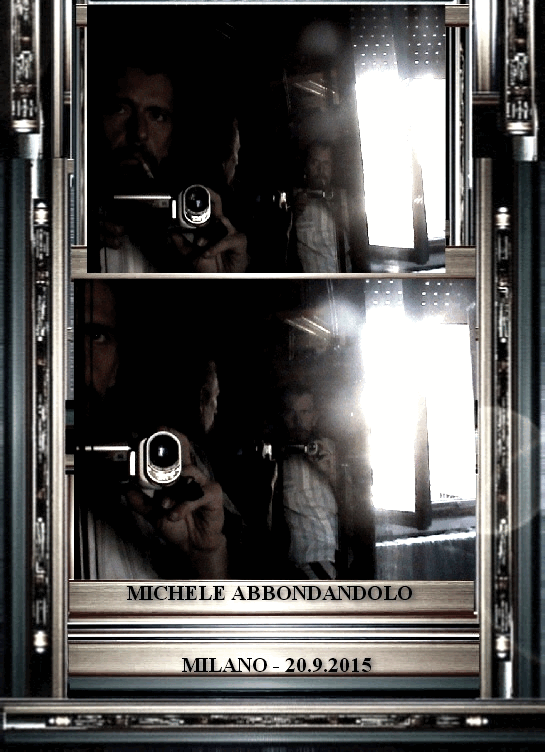


-

- ___Striker

-

